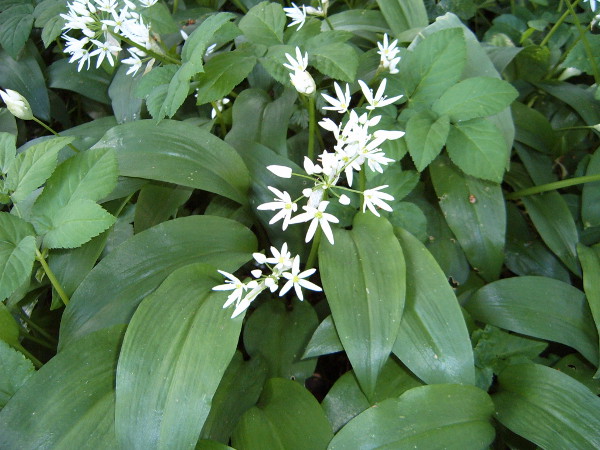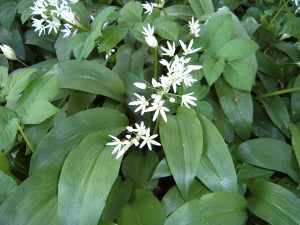“I would feel more optimistic about a bright future for man if he spent less time proving that he can outwit Nature and more time tasting her sweetness. ” – E. B. White
Contents
What is wild food?
Wild food is anything edible that has had no management to increase its production. This subject really also encompasses coastal foraging, wild mushrooms, fishing, crayfish and game, but we’ve listed these as separate topics; we focus mainly on wild land plants (leaves, berries, fruits, nuts, roots or sap) in this topic.
Wild food was once necessary for human survival, but now most traditional knowledge of wild food has been lost. In recent years there has been a widespread revival in foraging, and you can now do courses all over the UK from the wilds of Scotland to urban centres like London.

Many of the plant species that we view as weeds are edible and nutritious – modern farming favours foods that have been cultivated from their wild ancestors. We clear away ‘weeds’ to grow crops, yet many wild plants are more nutritious than their cultivated counterparts. For example the edible wild plant ‘fat hen’ contains more iron and protein than spinach, and more vitamin B and calcium than cabbage. As with many other wild foods it can also be cooked in the same way as the vegetables we regularly eat. Wild food plants and fungi form a part of the rich diversity of species that is vital to the functioning of ecosystems. Many of these species are being lost due to habitat destruction and pollution. Collecting wild food is much more popular in continental Europe. In one region of Finland 68% of households pick wild fungi for consumption – unimaginable here in Britain.

What are the benefits of wild food?
As long as we are sensitive when collecting wild food and consider other species, harvesting wild food can be beneficial to the environment. Wild food has no packaging, no chemicals to force it to grow, and can be picked local to your area, minimising food miles and pollution from vehicle exhausts.
Picking wild food in moderation can foster appreciation of nature, resulting in greater conservation of species. For example, if we wish to harvest wild garlic every spring, we might be more vocal if it’s under threat!
Fergus Drennan inspires about foraging. Film by Permaculture People
Eating a range of different species maintains biodiversity – the opposite of our intensive farming system, where we grow crops in monocultures, with damaging effects for the environment. Target species are favoured over wild species, and are grown intensively using pesticides, which can have detrimental effects on wildlife. Many of the wild animals that can be eaten are pests that have to be controlled and are often wasted.

One example is the grey squirrel, an introduced species that causes damage to tree saplings in woodlands, and forces out our native red squirrel. If they are to be culled, isn’t it better to eat them in preference to animals that may have been fed intensively-grown crops, housed indoors, pumped with antibiotics and transported many miles to reach your plate?
Consuming wild food can instill a greater respect for the environment, reconnecting us to the origins of our food, and illustrating our dependency on nature for survival. It also highlights the importance of seasonality and offers an alternative to our current globalised food system, where we can buy anything at any time of year.

There are health benefits too, as seasonal food matches the body’s needs. For example the spicy peppery leafy greens that arise in spring are good for renewal after the winter, and clean out the digestive tract. Our prehistoric ancestors browsed on wild foods from their local area, gaining the nutrients needed for healthy immune systems. Collecting wild foods is also thought to have a therapeutic value and is a great incentive to enjoy the countryside.
Collecting, processing and eating food from your landscape, in the season it grows, can provide a real sense of connection to the land and time of year.
Plus it’s free!

What can I do?
Foraging for wild food is exciting, as you never know what you are going to find. Wild plants and fungi grow in many places, even on wasteland in towns. Wild food is not only free but has also grown without us having to do any work.
Learning from someone who knows about wild food is a great start – a mentor or course provider. Being shown the plants in their natural habitat is really helpful when wanting to find and identify them later.

Getting a good book or two will really help – especially if you can take them with you when you go out foraging. It can be a good idea to have a field guide and a wild food book – as field guides are often much more accurate for identification, but don’t necessarily tell you whether you can eat things.
Anyone can pick their own wild plants and fungi; however there are some simple principles, and laws, that must be followed, for your own safety, and the preservation of plant populations.
Safe foraging
- Be 100% sure of your plant identification… ‘if in doubt, leave it out’. We have some seriously poisonous plants in the UK, so get to know them, as well as getting to know the edible ones.
- Double check the location you are foraging – avoid pesticides or other toxic substances, and foraging beside busy roads.
- If you are foraging water plants, always cook them – the risk of Liver Fluke and other water-borne illnesses is high in the UK.

Responsible foraging
- Take only what you need and can realistically eat.
- Leave plenty behind. Different people have different proportions they like to leave – always leave some for wildlife and other foragers.
- Don’t pick rare or endangered plants – even if they’re in your wild food book! Some species are protected by law. For a list see the Botanical Society of Britain and Ireland.
- Make sure you have permission from the landowner if necessary. It’s illegal to dig up a plant without permission. Species must not be picked from a National Nature Reserve (NNR) or Site of Special Scientific Interest (SSSI) without permission.
- Gather plants from healthy, plentiful populations.
- Be aware of where you’re treading – be careful of damaging other plants as you reach for the juiciest blackberries! Try to damage the plant you’re picking from as little as possible.

If you’re a beginner, try picking obvious species that you are already familiar with – for example nettles or dandelions. Just as importantly, familiarise yourself with the poisonous plants in your area too. Never eat any species that you are unsure of. Remember that many species are poisonous and some must be cooked to remove toxins.
Specialist(s)
Thanks to Ruth Hepworth for information.
The specialist(s) below will respond to queries on this topic. Please comment in the box at the bottom of the page.

Ffyona Campbell was taught by Aborigines, Bushmen, Pygmies and a great outdoorsman and has applied herself daily for the last 15 years to the task of learning the wild foods of Britain. Ffyona runs Wild Food Walks, based in Devon. She is the author of 5 books including The Hunter-Gatherer Way, and those documenting her journey as she walked around the world.



4 Comments
Thanks for the interesting article. Have you ever tried “Jack-in-the -hedge” or Garlic mustard Alliaria petiolata, it is a very common hedgerow plant and is coming through now, as kidney shaped leaves which as the plant ages turn into a more nettle like form. It has a very subtle garlic / mustard and cress taste, and is great for salads and sandwiches.
LEAVES – the leaves make ideal sandwich fillers, and if the leaves are finely chopped and mixed with a little olive oil, they make a refreshing and delicate salad dressing.
FLOWERS – the flower have a punchy flavour and can also be added to salads.
SEED PODS – for me the seed pods are best eaten as a wayside snack, and although have the same flavour as the rest of the plant, they won’t make your breath smell as it would if you had eaten a clove of true garlic!
Yes, it’s this isn’t it – http://www.onlyfoods.net/wp-content/uploads/2012/09/Garlic-Mustard-Images.jpg
and there’s loads of it about in May – had it in salads a lot at Redfield.
Yes that’s it exactly!! Only at the moment the leaves look completely different, a kidney shape with no saw tooth edge, when it starts to grow up it looks like the picture you sent. See below
https://www.google.co.uk/url?sa=i&rct=j&q=&esrc=s&source=images&cd=&cad=rja&uact=8&ved=0ahUKEwiv8fPjl6DMAhVC7hoKHYivD0sQjB0IBg&url=http%3A%2F%2Fwww.naturessecretlarder.co.uk%2Fwild-food-useful-plants%2Fjack-by-the-hedge-alliaria-petiolata.htm&psig=AFQjCNGrR0k5VeBInKtnAeaFGQi6xJyI_g&ust=1461343735621379
Garlic mustard is an excellent salad plant and can also be used to flavour cooked foods. As the season goes on it tends to fade after flowering, look for it under the shade of trees to find fresher specimens.